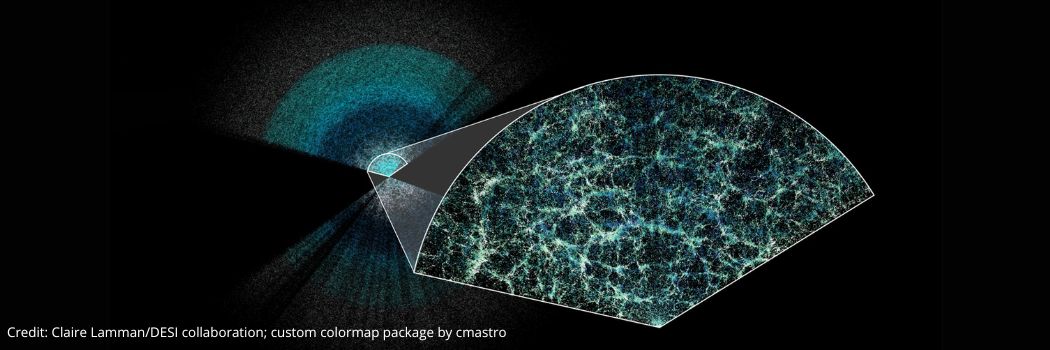
Our physicists are part of an international team that has made the largest 3D map of the Universe, measuring its expansion over 11 billion years.
The researchers used the Dark Energy Spectroscopic Instrument (DESI) to create the map and measure the effects of dark energy. Dark energy is the mysterious cause of the Universe's accelerating expansion.
With just its first year of data, DESI has surpassed all previous 3D maps combined and confirmed the basic ideas behind the best current model of the Universe – with some tantalising hints of possible discrepancies to explore with more data.
Durham University is a key member of the collaboration. We designed and built the fibre optic system which funnels light onto DESI's spectrograph and we carried out supercomputer simulations of the Universe, crucial for the interpretation of the data.
Mapping the cosmos
DESI has 5,000 tiny robots mounted on a telescope in a mountaintop, near Tucson, Arizona, and can look billions of years into the past.
The DESI team mapped the cosmos as it was in its youth and traced its growth into what we see today.
Understanding how the Universe has evolved is tied to how it ends, and to two of the biggest mysteries in physics: dark matter, which makes up most of the mass of the Universe and dark energy, the unknown ingredient causing the Universe's accelerating expansion.
To study the effects of dark energy over the past 11 billion years, DESI has created a map from over six million galaxies. The largest 3D map of our cosmos ever constructed, it allows the most precise measurements to date.
Never before has mankind measured the basic properties of our Universe with such precision. On the whole, the elegant model of our Universe that has emerged over the past four decades gets a clean bill of health. And yet, there are hints in the data that perhaps the simplest possible form of dark energy – Einstein's cosmological constant, Lambda – may not be the whole story.
Expansion history of the Universe
This is the first time scientists have measured the expansion history of the distant Universe (eight to 11 billion years) with a precision of better than one per cent. It gives us the best view yet of how the Universe has evolved.
As DESI gathers more information during its five-year survey, these early results will become ever more accurate.
This could show if there's a need to revise the standard model currently accepted by scientists to understand how our Universe evolved.






